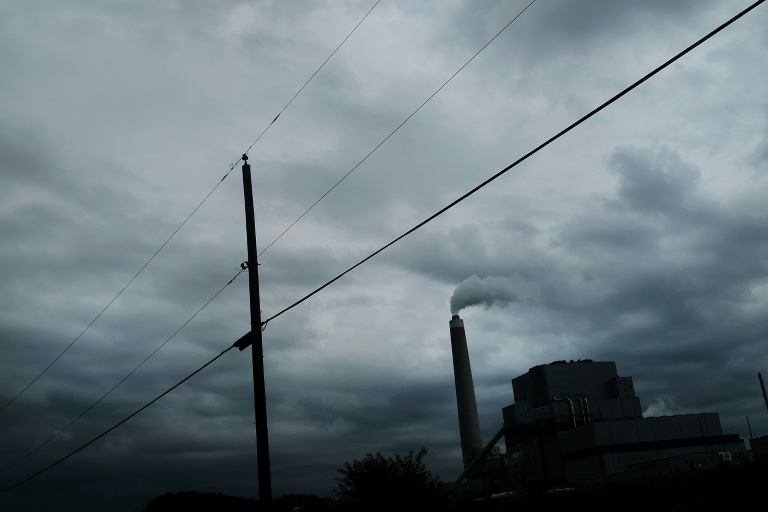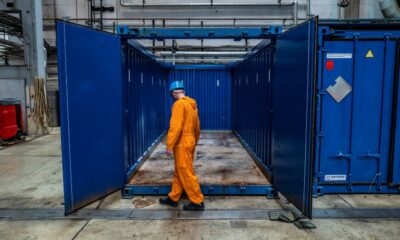US efforts to transition to cleaner energy carry risks of mass layoffs in mature industries, say experts, who warn that policies to cushion the blow may not live up to hype.
The Biden administration, through measures such as the 2022 Inflation Reduction Act, points to billions of dollars in support targeting communities disfavored in the energy transition.
The push for change got a boost at the UN-led COP28 summit in Dubai on Wednesday, where governments approved an agreement that favors “transitioning away from fossil fuels in energy systems, in a just, orderly and equitable manner.”
The Biden program includes grants for projects in places that have lost coal mining jobs, plus billions of dollars to enable manufacturing conversion investments for electric vehicles, including from internal combustion engine (ICE) auto plants or even oil refineries.
The goal is to ensure “a strong and just transition to electric vehicles” and the retention of “high-quality jobs in communities that currently host manufacturing facilities,” according to the Department of Energy statements.
Such programs sound promising, but not everyone is convinced they will work. Funding under the programs go to businesses with growth plans — not workers whose factories close.
Gordon Hanson, a professor at Harvard’s Kennedy School of government, predicted the Biden policies were more likely to succeed in boosting greener output than in supporting workers from industries that lose out.
He notes that much new electric vehicle (EV) investment has gone to southern states like Georgia and Tennessee where companies have hired younger workers — not the traditional auto manufacturing base of the industrial Midwest.
Of particular concern is a potential mass-layoff event such as the shuttering of an ICE assembly plant or an oil refinery.
The United States could lose at least two to three million jobs over the next 15 years between the energy transition and the knock-on effects on communities, Hanson estimates.
“We have to plan for it to be disruptive,” he said. “If we don’t, it’s going to look a lot like what happened to manufacturing due to globalization and technological innovation over the last three decades, and that’s not been pretty.”
– Growing demand –
On November 27, the Department of Energy announced $275 million in funding for seven projects targeting regions that experienced coal mine or coal-fired power plant closures.
The funds will go towards the manufacturing of wind turbines, key metals for power grid storage and the production of parts used in EV batteries.
One of the recipients, Alpen High Performance Products, will use $5.8 million from Washington to buy state-of-the-art equipment to boost output of flat glass for high insulation.
The equipment will be used in a Colorado plant located near a recently closed coal-powered power station and in another plant near Pittsburgh in a region that has lost coal-mining jobs, said Alpen Chief Executive Brad Begin.
“Demand is exploding right now,” said Begin, who expects to add another 100 workers in light of new building codes that favor high-performance glass.
As part of the grant application, Alpen said it would contact a coal workers union in Pennsylvania about job openings.
“We’ll be proactive about that,” said Begin, adding that a boost for former coal industry workers is “sort of indirect” under the program.
– Transitioning from ‘dirty’ jobs –
While there has been some increase in workers transitioning from disfavored sectors into green jobs, fewer than one percent of workers who leave a “dirty job” have landed in a “green job,” according to a July 2023 paper published by the National Bureau of Economic Research.
E. Mark Curtis, an economist at Wake Forest University who co-authored the paper, welcomed targeting coal-affected regions, but said his study underscored the challenges, especially for older workers and those without a college degree
One reason for optimism “is that 30 percent of workers leaving a fossil fuel industry go to manufacturing,” Curtis said in an email.
“To the extent that the IRA generates manufacturing jobs in fossil fuel communities, this will be good for those communities.”
Harvard’s Hanson said the government should develop a separate policy for vulnerable workers that doesn’t seek to boost green energy at the same time.
He additionally recommends boosting spending for community colleges in hard-hit regions, extra unemployment benefits for communities that lose jobs and encouraging small business loans to such areas.

 Business4 months ago
Business4 months ago
 Business5 months ago
Business5 months ago
 Events3 months ago
Events3 months ago
 People4 months ago
People4 months ago
 Events6 months ago
Events6 months ago
















